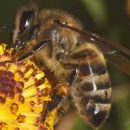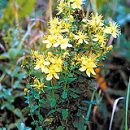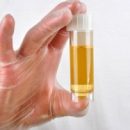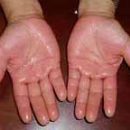Honey is a sweet product that produces a bee. In addition to pleasant taste, bee honey has a positive effect on the body. In honey there are biostimulants that increase the livelihoods of the body. Honey as an energy source occupies one of the first places.
Content
Varieties and composition of bee honey
Honey is a sweet product produced by a honey bee from nectar, a paddy or sweet juices located in various parts of plants or trees, and from substances that are distinguished from the salivary glasses of bees.
Depending on the source from which the bee honey is obtained, it is divided into two main types: floral and falling.
Fresh honey is a thick transparent semi-liquid mass, which begins to gradually crystallize over time. Pure honey remains liquid until it is sealed in cells of honeycombs in the hive at a temperature of 20-30 ?WITH. The consistency of honey affects not only the concentration of sugars, but also their appearance. Honey containing large fructose (levulose) is more liquid than honey in which there is more glucose and other higher sugars.
Honey retains liquid consistency only a certain time, after which it crystallizes. Concentration of sugars, their appearance and structure are the main factors affecting honey crystallization. Crystallization of honey indicates its benignness.
Depending on the coloring substances in nectar (carotene, xanthophila, chlorophilopod-like, etc.), the color of honey may be different. The brightest honey is an acacia, with a barely noticeable cream tint. Over time, honey loses its original color. Usually it darkens, and when crystallization brightens.
Varieties of honey and aroma. The smell of honey is determined by the presence of characteristic volatile organic substances in the nectar of flowers. Essential oils highlighted by special cells of glands, located next to the necatic, have exceptional specificity, which can accurately determine the origin of honey. The intensity of the aroma depends on the number of volatile organic substances in honey.
Bee honey differs from other food products with a pleasant taste, depending on its origin and composition. Honey sweetness directly depends on the concentration of composite sugars and their origin. The sweetest is honey, in which fructose prevails.
The composition of honey was found - phosphorus, iron, magnesium, calcium, chlorine, copper, sulfur, lead and other trace elements. Honey is the richest trace elements with a vegetable animal product.
Money also contains some vitamins: Bi, B2, pantothenic acid, PP - nicotinic acid, B6, folic acid, ascorbic acid, vitamin E, K, carotene.
Useful properties of bee honey
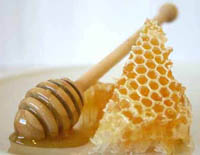 According to scientists in honey there are also biogenic stimulants that increase the life of the body. It has been established that honey is a concentrated high-calorie product close to the composition of the blood plasma and differing significantly by chemical composition from other food products.
According to scientists in honey there are also biogenic stimulants that increase the life of the body. It has been established that honey is a concentrated high-calorie product close to the composition of the blood plasma and differing significantly by chemical composition from other food products.
As an energy source, honey occupies one of the first places in the table of agricultural value of food. Proteins contained in honey play the role of plastic substance in the body and participate in the formation of hormones. Honey mineral substances play an extremely important biological role, since due to their relationship with a number of enzymes, vitamins and hormones, affect the excitability of the nervous system, tissue respiration, blood formation processes, etc. Honey enzymes contribute to digestive processes in the body, stimulate the secretory activity of the stomach and intestines, facilitate the absorption of nutrients. Honey contains growth factors.
Chemical and biological composition of honey makes it not only excellent nutritious, but also an important pharmacological object. Sugar coming with honey into the body are not only an energy element, but also have a healing effect. They are universal antitoxic agent. Glucose and fructose contribute to the regulation of nervous activity, blood pressure, expanding blood vessels, improving the nutrition of the heart muscle, increasing the diurea, improvement of metabolism, accelerate cardiac activity, also stop bleeding.
Taken inside bee honey regulates the acidity of gastric juice, increases the formation of mucin and is therefore recommended when treating duodenal ulcers and at elevated acidity.
Proteins (protein components), located in honey, especially for children they need to grow.
The constant consumption of bee honey increases the immunobiological reactivity of the body, makes it resistant to infections, and the disease becomes easier to transfers the disease.

